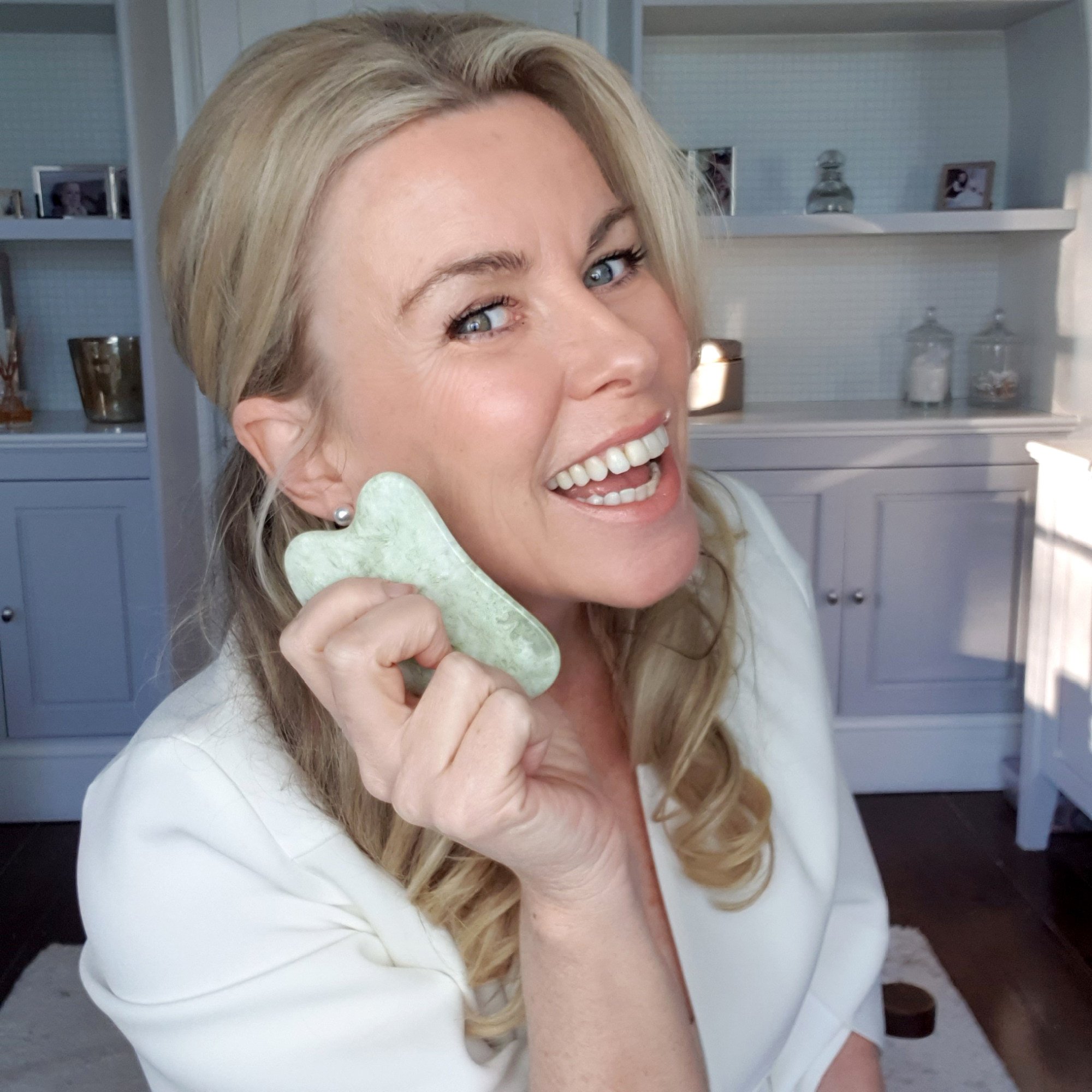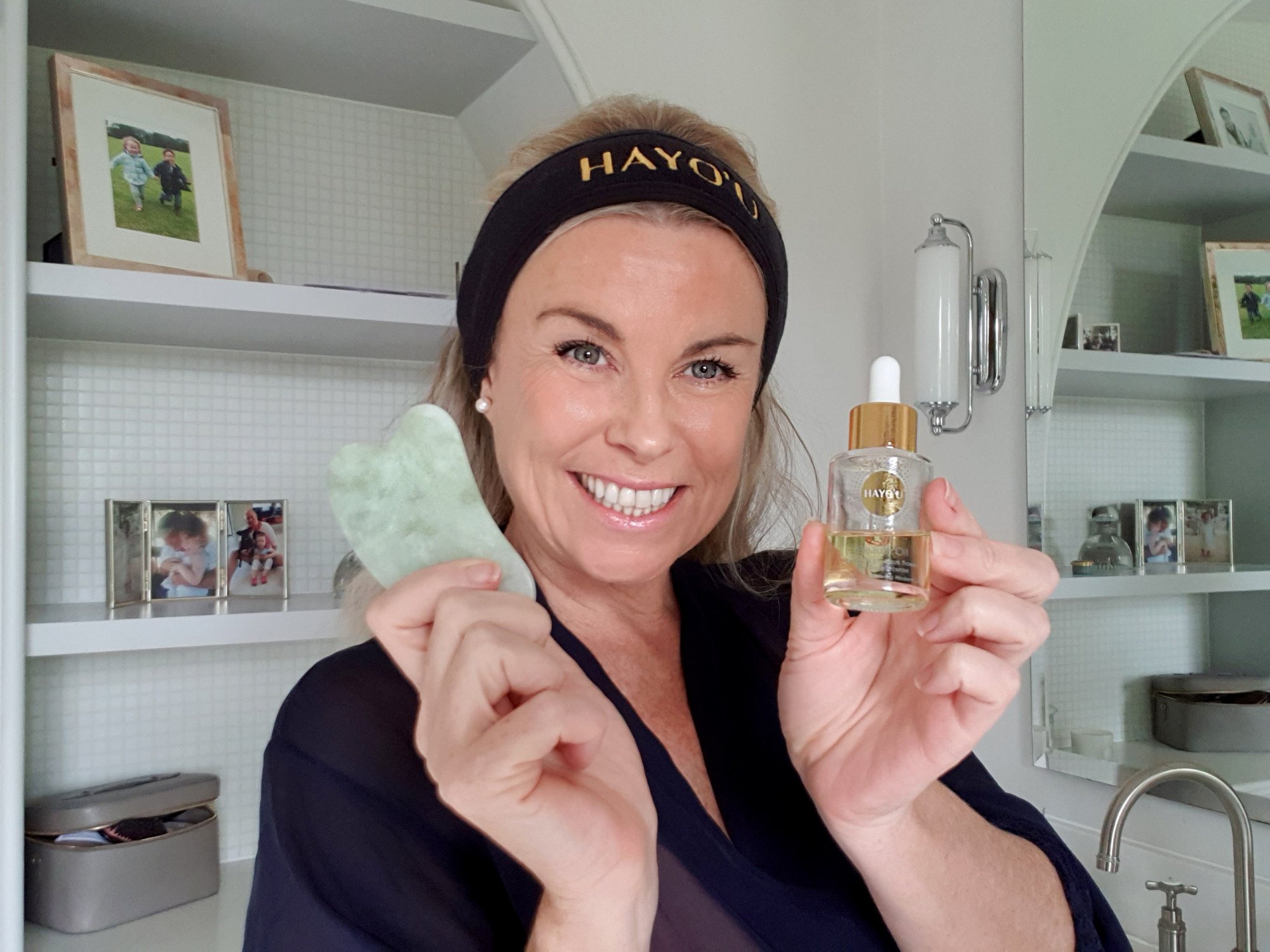
How daily TCM techniques can boost your health – here are 5 easy ones to try, from a popular influencer
- Katie Brindle has been promoting the benefits of traditional Chinese medicine for 20 years since a 10-minute massage cleared her long-standing shoulder pain
- Her mission, she says, is to demystify a healing system of preventive self-care that’s been used for thousands of years
TikTok influencers claim gua sha is the latest viral beauty hack for glowing skin, but there is so much more to ancient Chinese health and beauty treatments.
That is the view of Katie Brindle, a UK-based traditional Chinese medicine (TCM) practitioner of 20 years who wrote Yang Sheng: The Art of Chinese Self-Healing.
“I want people to recognise that the answers to many of their health problems are here in Chinese medicine,” says Brindle over Zoom. Her mission, she says, is to demystify a healing system of preventive self-care that has been used by millions of people for thousands of years.
Its core theory is that in eliminating smaller health niggles, the body is able to stay in balance to stay healthy, rather than waiting until it becomes really unwell to treat the root problem.
While Chinese medicine is practised widely in Asia, particularly among older generations, Brindle believes it still has yet to find a loyal following in the West, where many still associate Chinese medicine with illegal animal trafficking more than beauty hacks.
“There’s an ancient Chinese proverb: ‘Waiting to treat illnesses after they manifest is like waiting to dig a well after one is thirsty,’” she says. “Regular yang sheng [‘nourishing life’] will do for your well-being what tooth brushing does for your mouth. You wouldn’t dream of not brushing your teeth each day. Yang sheng is daily maintenance for your body, mind and spirit.”
On her website, Brindle shares tips for myriad health and wellness complaints. For weight loss, she advises eating warm and freshly made foods, not eating late at night, and eating slowly, chewing food slowly and not rushing, and going for a walk after each meal. To banish cellulite, comb or brush your body before a shower.
Want better sleep? Do gua sha, but not on the face; sweep the tool over the upper chest and the scalp before bed, to release excess stress, heat and inflammation, and activate the rest phase of the nervous system. Brindle also recommends gua sha to rid oneself of spider veins, but to practise it on the area behind the knee, not on the veins themselves.
She adds that the Chinese believe that all skin problems have their root in digestive issues, which are often caused by stress. For many suffering from skin conditions, a good place to start would be to eliminate coffee, alcohol and other stimulants.
In all of her teachings, Brindle comes back to the importance of qi, or energy.
“When you stimulate your blood flow or move your lymphatic fluid, your qi is also stimulated. According to Chinese medicine, the quality and movement of qi through the body determines your health,” she says.
“The ideal state is one of smooth flow with no imbalances or blockages. If you have stagnation, whether physical, emotional or spiritual, this will eventually manifest as disease.”

Brindle also runs free qi gong classes on her Instagram platform with a lively narrative: In one class she says: “Imagine you are a jellyfish, sucking the qi into your body and releasing it.”
Brindle herself became a TCM convert after a car accident in her teens that left her with more or less constant shoulder pain for eight years. She recalls walking down a street in London carrying a heavy shopping bag, in agony because of her shoulder. She noticed a small TCM clinic that was offering 10-minute massages for £10.
“On the spur of the moment, I decided to go in and get a massage, shopping bags and all,” she said. “The practitioner did gua sha on my shoulder and in 10 minutes he healed me. I was sobbing as I literally could feel the pain lifting away. I realised this [practising TCM] is what I was meant to do.”
As she learned more about the power of TCM and began to practice it daily, she looked at her friends and thought, “Why does no one do this, or even know about it?”
Now her mission is seeing success; with more than 64,000 followers on her Instagram, and many more signed up to her website – you have to sign up for free to download her guides – and testimonials from all over the world, she has helped many overcome fertility issues, menopausal problems, joint pain, emotional problems and much more.
She says: “Health is not a potion, powder or pill, it’s the small daily actions that add up.”
Katie Brindle’s 5 tips for holistic health
1. Breathe into your organs
Keep your master organs happy and healthy to stay in balance. My rescue breath ritual is a good place to start, strengthening the five master organs; a breath exercise which focuses the breath on the heart, liver, kidney, spleen and lung.
As you breathe a long breath out, make a loud expelling healing sound (Brindle has a demonstration on her website). As you do so, visualise the matching organ or area. Send it happy vibes and imagine old, stale energy coming out of it, like mist. Repeat five times for each organ.

2. Eat when calm
The TCM attitude to food focuses on digestion, on how you’re eating. Saliva is considered crucial for health. And it’s said your emotions affect the quality both of your saliva and of your digestive juices. Taoists say when you are relaxed, something called “the longevity hormone” is released into the saliva. Mindlessly gulping down your food or feeling guilty after eating affects the saliva’s quality. The same applies to eating while angry.
3. Ensure smooth circulation
Circulation needs to move smoothly round your body, just as much for your qi as for your blood. To promote this, shake your arms, legs, and whole body for a minute. You can also tap all over your body whenever you feel sluggish, using a slightly clenched fist or bamboo wand, to stimulate and invigorate your cells and unblock your qi.

4. Purge and nourish
For your body to feel healthy and for you to feel good, you need to remove all waste products regularly, through sweat, breath and bodily waste. This enables fresh food, energy and impetus to enter the body. As Taoist masters say, “you cannot fill a full cup”. Exercise daily and replenish your body with fresh, organic food.
5. Maintain balance
You may be a super-fit gym bunny, but you can’t be healthy if you’re on an emotional roller coaster. The yin energy must be balanced with the yang. Meditate daily, even if for five minutes, and make time to relax.

